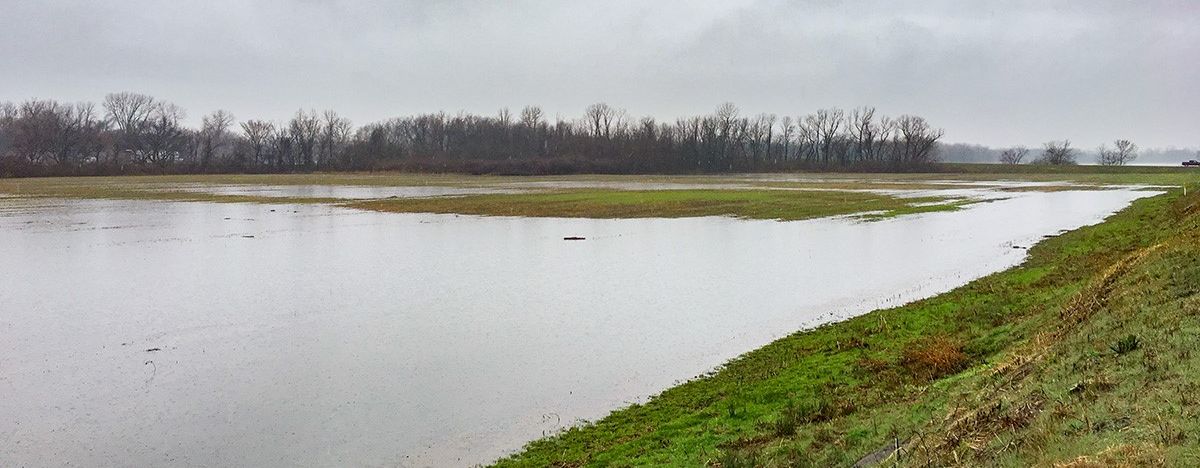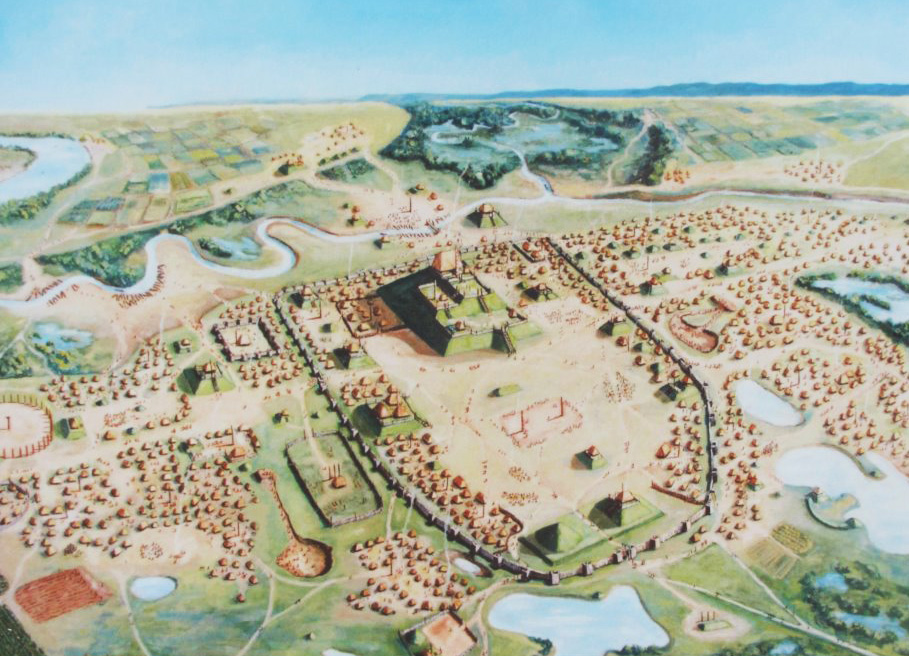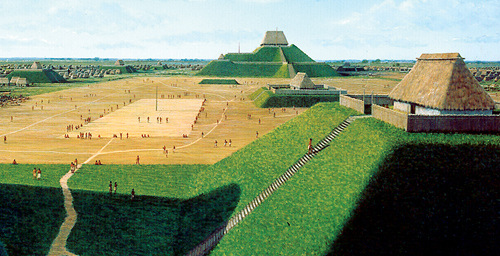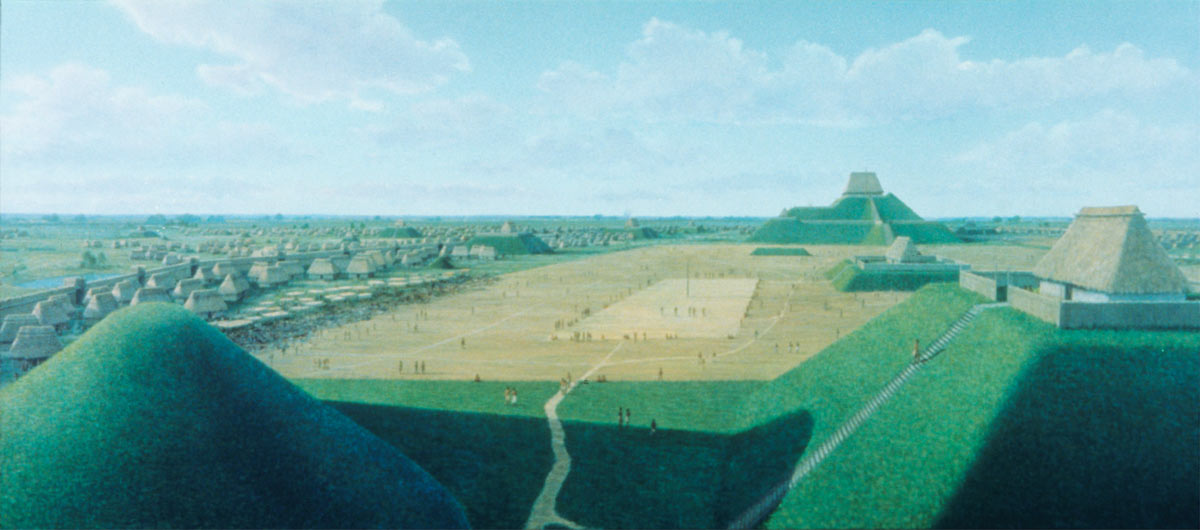Welcome to DU!
The truly grassroots left-of-center political community where regular people, not algorithms, drive the discussions and set the standards.
Join the community:
Create a free account
Support DU (and get rid of ads!):
Become a Star Member
Latest Breaking News
General Discussion
The DU Lounge
All Forums
Issue Forums
Culture Forums
Alliance Forums
Region Forums
Support Forums
Help & Search
Anthropology
Related: About this forum'Plaza' in ancient city of Cahokia near today's St. Louis was likely inundated year-round

'Plaza' in ancient city of Cahokia near today’s St. Louis was likely inundated year-round
New paleoenvironmental analyses of the north plaza suggest it was almost always underwater
August 11, 2022
The ancient North American city of Cahokia had as its focal point a feature now known as Monks Mound, a giant earthwork surrounded on its north, south, east and west by large rectangular open areas. These flat zones, called plazas by archaeologists, were thought to be communal areas near the many mounds and structures of the city.
However, new U.S. National Science Foundation-supported paleoenvironmental analyses call into question earlier interpretations of the north plaza’s role in Cahokian society, suggesting that it was almost always underwater. The study is reported in the journal World Archaeology.
Cahokia was built in the vicinity of present-day St. Louis, beginning in about A.D. 1050. It grew and thrived for more than 300 years but was abandoned by 1400. Many mysteries surround the culture, layout and architecture of the city, in particular its relationship to water.
Cahokia was built in a flood plain below the confluence of the Mississippi and Illinois rivers and would have been regularly infiltrated with flowing water, said Caitlin Rankin, a geoarchaeologist at the Illinois State Archaeological Survey who conducted the research. "Cahokia is the largest archaeological site in North America, but only about 1% of it has been excavated, so there’s much about the site we don’t know," Rankin said.
More:
https://beta.nsf.gov/news/plaza-ancient-city-cahokia-near-todays-st-louis-was-likely-inundated-year-round
~ ~ ~


Cahokia: North America's First City
By Owen Jarus published January 11, 2018

An illustration of North America's first city, Cahokia.
The pre-Columbian settlement at Cahokia was the largest city in North America north of Mexico, with as many as 20,000 people living there at its peak. (Image credit: Painting by Lloyd K. Townsend. Courtesy of the Cahokia Mounds State Historic Site, Illinois. )
Cahokia was a city that, at its peak from A.D. 1050-1200, was larger than many European cities, including London. The city was spread out over six square miles (16 square kilometers) and encompassed at least 120 mounds and a population between 10,000 and 20,000 people.
Located across the Mississippi River from modern-day St. Louis, it was the largest pre-Columbian city north of Mexico. The inhabitants of Cahokia did not use a writing system, and researchers today rely heavily on archaeology to interpret it. The name "Cahokia" is from an aboriginal people who lived in the area during the 17th century.
Cultural finds from the city include evidence of a popular game called "Chunkey" and a caffeine loaded drink. Artistic finds include stone tablets carved with images (such as a birdman) as well as evidence of sophisticated copper working, including jewelry and headdresses.
Recent research shows that many of the people who lived at Cahokia were immigrants who came from across the Midwest, possibly traveling from as far away as the Great Lakes and Gulf Coast, a study of their teeth shows. To the south of Cahokia a settlement that archaeologists call Washausen became abandoned around the time Cahokia was at its peak around A.D. 1100, a study published recently in the Journal of Archaeological Science Reports found. It's possible that some of the residents at Washausen, and other sites located near it, moved to Cahokia.
More:
https://www.livescience.com/22737-cahokia.html
InfoView thread info, including edit history
TrashPut this thread in your Trash Can (My DU » Trash Can)
BookmarkAdd this thread to your Bookmarks (My DU » Bookmarks)
2 replies, 1138 views
ShareGet links to this post and/or share on social media
AlertAlert this post for a rule violation
PowersThere are no powers you can use on this post
EditCannot edit other people's posts
ReplyReply to this post
EditCannot edit other people's posts
Rec (17)
ReplyReply to this post
2 replies
 = new reply since forum marked as read
Highlight:
NoneDon't highlight anything
5 newestHighlight 5 most recent replies
= new reply since forum marked as read
Highlight:
NoneDon't highlight anything
5 newestHighlight 5 most recent replies
'Plaza' in ancient city of Cahokia near today's St. Louis was likely inundated year-round (Original Post)
Judi Lynn
Aug 2022
OP
These mounds are massive. We occasionally drive by them on the way to other points east
SWBTATTReg
Aug 2022
#1
SWBTATTReg
(22,077 posts)1. These mounds are massive. We occasionally drive by them on the way to other points east
from STLMO. They're huge! They do have a museum or visitor's center for those of you who may wish to visit.
Atticus
(15,124 posts)2. It has been a few years since I have climbed to the top of that mound and visited the wonderful
artifacts and exhibits in the adjacent facility.
If memory serves, dark gray flint from what is now Ohio and sea shells from the Gulf of Mexico were both found in various digs on the large site, evidencing how widespread the trade area was for the mound builders.
It is a fascinating place to visit and just down the highway from St. Louis's arch.